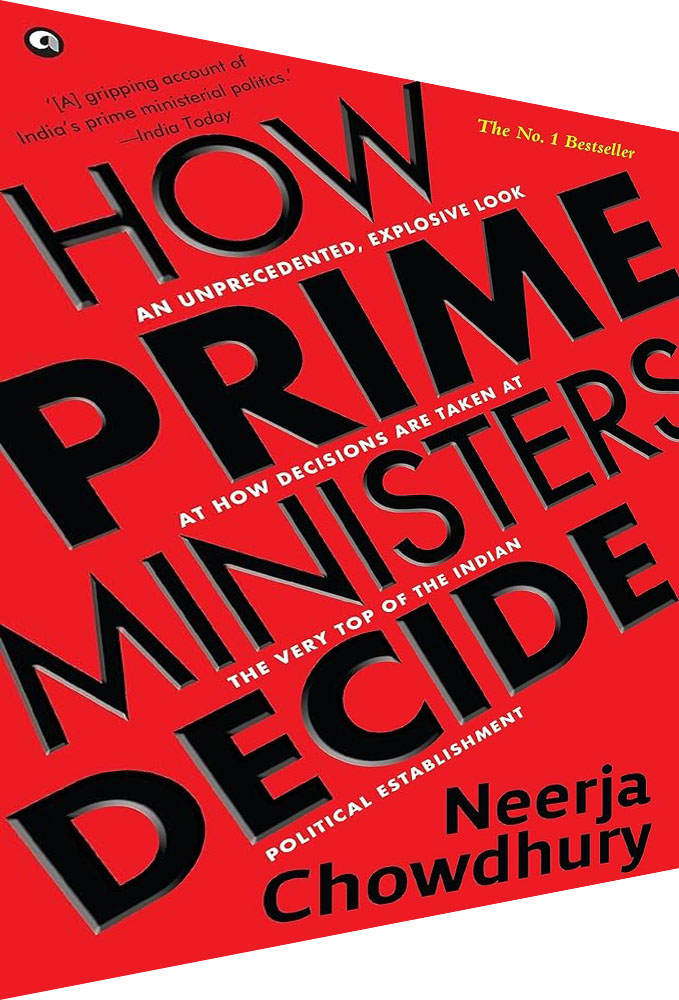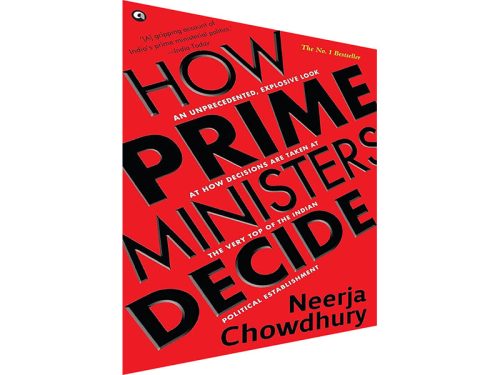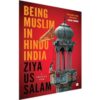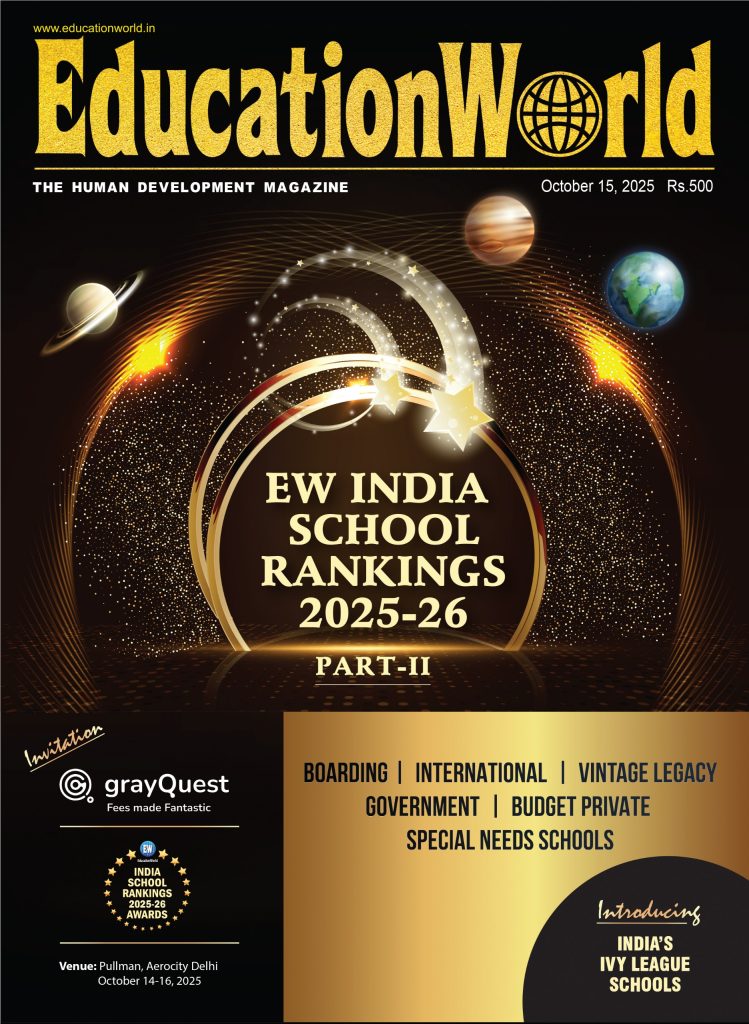Vignettes of six PMs
 Prime Ministerial Decision-making in India
Prime Ministerial Decision-making in India
Neerja Chowdhury
ALEPH BOOK COMPANY
Rs. 999
Pages 578
In her study of six India prime ministers, this renowned journalist begins with Indira Gandhi until Manmohan Singh, skipping short tenure PMs
In her study of India prime ministers renowned journalist Neerja Chowdhury begins with Indira Gandhi and six prime ministers until Manmohan Singh. Notably, she skips five short-tenured prime ministers, despite their regimes having significantly altered Indian politics, as well as the process of prime ministerial decision-making.
Yet, she presents an authentic and candid account of complex decisions taken by each of the six chosen PMs — post-resurrection (Indira Gandhi), Shah Bano (Rajiv Gandhi), post-Mandal (V.P. Singh), post-demolition of the Babri Masjid (P.V. Narasimha Rao), testing nuclear devices (Atal Bihari Vajpayee) and Indo-US civil nuclear deal (Manmohan Singh).
Beginning with a well-analysed 19-page introduction, raising and underlining crucial issues and processes relating to the office of prime minister, Chowdhury quotes powerful orator Atal Bihari Vajpayee, ‘The higher you go, the more lonely you are.’ This sets the tone of the analysis that depicts prime ministers as mere mortals, attempting to survive amidst competing pressures, striving to triumph politically. In the process, despite a short tenure V.P. Singh changed the politics of the country for all time to come. And she rightly bemoans the current fashion of rubbishing Nehru.
Her contextualisation of the office of prime minister linked to a host of institutions is apt. So, if the Prime Minister’s Office (PMO) is created, not only does the cabinet system decline ceding to the prime ministerial system, the cabinet secretariat that has constitutional sanction also declines relative to the PMO.
Chowdhury also underlines the different ways in which the PMO functions. Her analysis also clears recent motivated narratives that Nehru created the PMO to function in an autocratic fashion. Rightly, as Pai Panandiker-Mehra’s (1996) study of cabinet government highlighted, Shastri created a small PMO to help him with L.K. Jha as secretary. This was expanded by Indira Gandhi, who revived and expanded it after Morarji Desai had limited its expanse and worked through the cabinet secretariat.
Indira Gandhi’s politics of neutralising the Syndicate is well-captured in this narrative. Despite her claim that she did not believe in any ‘ism’, she espoused socialism — the result was centre-staging the slogan, garibi hatao, in 1971. The 1975 judgment of Justice JML Sinha on the election petition of Raj Narain declaring her election null and void and unseating her from Parliament in June 1975, prompted her to declare a national Emergency on June 25, 1975. But while flagging the role of Sanjay Gandhi, Chowdhury rushes through this section. Her decision to call a General Election in 1977, knowing fully well that she could lose despite assurances of the IB, and her resurrection between 1977 and 1980 were amazing acts of courage.
Rajiv Gandhi took over as the prime minister following his mother’s assassination, with President Giani Zail Singh’s backing. Beginning with immense goodwill and the clean slate of a non-political leader, he unfortunately became “the secular prime minister who undermined secularism”.
Chowdhury’s analysis of his tenure details how with the false steps of enacting a law to appease conservative Muslims (even Sonia Gandhi did not agree with him) following the Shah Bano judgment, unlocking the gates of controversial Babri Masjid-Ram Janmabhoomi to appease Hindu sentiment and promising Ram Rajya to kick off his 1989 election campaign, he destroyed his credentials and goodwill.
V.P. Singh’s short tenure as prime minister is well-analysed depicting his rise and fall. But he left an indelible footprint with his Mandal politics, which redefined Indian politics and governance of the country. Singh’s statement to Chowdhury: “Some run governments…. I ran history. It will define governments and coalitions in the time to come,” sums up his contribution to history. He let out two genies – ‘Mandal’ and ‘kamandal’ out of the bottle and they haven’t been put back.
P.V. Narasimha Rao has often been described as the prime minister who refused to decide, but his statement: ‘Jo hua voh theek hua…. Maine is liye hone diya… ki Bharatiya Janata Party ki mandir ki rajniti hamesha ke liye khatam ho jaye’ (What happened, happened for good. I allowed it to happen because I wanted the BJP’s temple politics to finish for ever) was the outcome of a conscious decision. Yet his ‘non-decision’ consolidated saffron politics for which he paid a heavy price personally with his political credibility, notwithstanding India’s economic recovery through liberalisation being completely lost, even in his own party.
Chowdhury’s revelation that Vajpayee was against India going nuclear when he was the external affairs minister in the Morarji Desai cabinet after K. Subrahmanyam, Chairman of the Joint Intelligence Committee of the Government, reported Pakistan’s nuclear plans, is a big surprise because when he became prime minister, he “roared” to make India a nuclear power. Yet, Chowdhury reports, “Rao told me the bomb was ready. I only exploded it,” said Vajpayee. Overall, Vajpayee’s premiership gets a mixed report; he focused on larger issues, leaving nuts and bolts to his secretary Brajesh Mishra. He was focused more on the Kashmir tangle and towards improving ties with Pakistan.
Chowdhury’s focus on Manmohan Singh is on the defining feature of his tenure — the Indo-US civil nuclear deal. The irony is that Vajpayee, who initiated it, emerged as its bitterest critic. However, during its two terms, the Manmohan Singh government didn’t deserve the flak it took because Sonia Gandhi took decisions and had a say in all major policy initiatives.
Chowdhury leaves Narendra Modi’s prime ministership as work in progress but makes an interesting observation in the Epilogue, that Modi likes to model himself as a leader of the stature of Nehru, even excel him. That perhaps explains Modi’s severe attack on Nehru and his initiatives, many of which he has tried to erase.
This book shines a useful light on the office of prime minister and Chowdhury dispassionately contributes a number of hitherto unavailable details. Yet, the author appears hemmed in by her professional training. This makes the study rather descriptive. Second, her focus on a few events of the tenures of the six Prime Ministers limits her from making comprehensive analyses. Yet, this voluminous account is informative, lucidly written and highly readable.
Ajay K. Mehra (The Book Review)

















Add comment